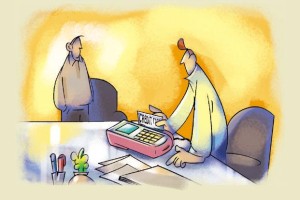Managing finances wisely: A guide for young people
 The monetary system works well, which is why people all over the world have used money for thousands of years. Money has an agreed upon value, a standard by which worth is judged. Our standard is of course the dollar, and no one better than a young person knows the value of a dollar. Why? Because for you, dollars are hard to come by, easy to spend, and difficult to replenish.
The monetary system works well, which is why people all over the world have used money for thousands of years. Money has an agreed upon value, a standard by which worth is judged. Our standard is of course the dollar, and no one better than a young person knows the value of a dollar. Why? Because for you, dollars are hard to come by, easy to spend, and difficult to replenish.
Here is how a young person can stack these dollars by acting smartly
Start saving
Saving money is just plain easier if we’re saving for something. The thing we’re saving for is our goal. Our goal can be short-term or long-term, depending on the nature of the purchase. Generally speaking, short-term goals are easier to achieve because our aim is shorter. Long-term goals take years to achieve, but we all have to start somewhere.
Getting Credit
If the companies you want to borrow money from find out you’re negligent about paying your bills, if you’re always late, or always short, you’re going to have to pay more to borrow the money you want. That makes sense, doesn’t it? If you’re considered a risky bet, you have to pay more to borrow money. If on the other hand, you’re always on time, people will trust you more and you won’t have to pay as much for that car loan as the person who’s always late.
Automatic Savings/ Direct Deposit
Banks and other institutions know exactly how hard it is to save money. So they’ve come up with a tool to make it much easier. I’ve used automatic savings for years, and there’s no doubt that it’s helped me achieve some major financial goals. The only thing you need is a job and a bank account.
Here’s how it works:
- Decide how much you want to save
- Decide where you want this saved money to end up
- Save money without worrying about it!
Every month, I have money deducted from my paycheck and deposited into a variety of accounts. The money goes its way without my ever seeing it, in other words, it never makes it into my paycheck, so I don’t have to face the pain of writing a check, or even worse, depositing cash. You sign up in one of two ways. You can contact your human resources office, who should be able to send the money where you want it to go. And if you go from the direction of where you want your money to end up — say you want to open an online savings account and also fund your Roth Individual Retirement Account, then set up the accounts and have those institutions contact your bank account.
Value Investing
Your aim should be to buy good solid companies whose prices are within your budget. You are to then hold those companies until investing in them no longer makes sense. When does investing in a company make no sense? When their fundamentals — how they run their company — are not good, or when a company’s stock price is so expensive that it’s simply too late to count on any further upward momentum.
Look for impressive dividends
Some companies’ dividends are impressive indeed, and if their fundamentals are sound, I suggest that you own a piece of those companies. If it’s a great stock, like Apple was once upon a time, when it cost less than $20 per share, then you hold onto it and don’t ever let it go. Things that make us rich are a blessing, and I say that without one bit of hesitation. Having money in abundance is something to be grateful for, and if we’re able to earn money even while we’re sleeping, we’ve got the right idea.
So, what’s your investing motto? Buy good companies cheaply. If the company offers you the option of re-investing your dividends, act like you’ve got some sense and re-invest them. Buy and hold. Buy and hold.
Here’s what you look at carefully when you’re considering whether to buy shares of a company:
- What is their market capitalization; i.e., how much is the company worth?
- How much debt do they carry?
- Who runs the company? How long has this person been on board?
- What is their price to earnings ratio?
- What do they produce, and is their future outlook rosy or bleak?
- How many employees do they have? Are the employees treated well?
- How long has the company been in business?
- What is the outlook for the future?
How do we as individuals and nations keep up with rising prices when our incomes aren’t keeping pace? We can’t. Not as long as we don’t make a decent amount of money with our investments. Life is scary, unless you just sit around in an easy chair all day. We have to get out there. We have to take risks.














